2025 Buyer’s Guide on Tyre Gantry Crane
Date: 2025-02-11 Share:
Understanding Tyre Gantry Cranes
What Is a Tyre Gantry Crane?
The tyre gantry crane is a type of crane that runs on tires rather than rails and is commonly used in various industrial settings due to its flexibility and mobility features. Its main parts consist of a gantry structure, a horizontal beam, a hoisting system, a moving mechanism, and a control panel. The basic principle of operation is simple; the moving system drives the crane forward while the hoist picks up and moves objects. This system utilizes hydraulic and electrical controls to guarantee safe usage.
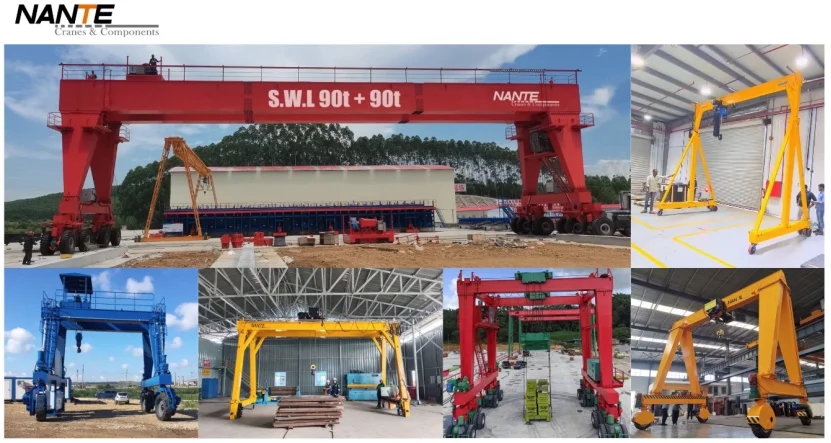
Advantages Over Rail-Mounted Gantry Systems
Tyre gantry cranes provide benefits when compared to rail-mounted systems because of their tire-based mobility that removes the requirement for fixed rails, resulting in quicker and more cost-effective installation processes. Their maneuverability allows them to function effectively across surfaces and adjust to different site conditions. They are particularly well suited for settings such as beam factories with layouts and areas without overhead crane systems. The absence of runway structures or concrete foundations also adds to long-term cost efficiency.
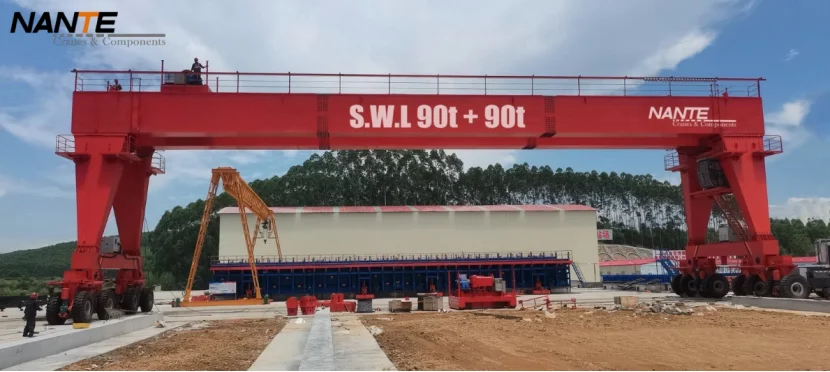
These advantages establish tyre gantry cranes as a budget-friendly option for contemporary industrial activities.
Industrial Applications: Ports to Manufacturing
Tyre gantry cranes have applications across various industries. They play a role in port terminals where they efficiently handle the loading and unloading of cargo as well as stacking it. In manufacturing and construction settings they aid in moving materials to boost productivity along assembly lines. The steel sector benefits from their usage for handling coils, plates, and beams while warehouses rely on them for material handling and logistics. The versatility of these cranes is evident in their support for maintenance, repair, and transportation of blocks making them indispensable in a variety of industrial situations. Here are the basic principles laid out succinctly.
Configuration Types and Technical Specifications
Single vs Double Girder Cranes
Tyre gantry cranes come in two main configurations: single and double girder models. Single-girder cranes are typically more cost-effective and suited for lighter loads, while double-girder cranes offer superior stability and are better for handling heavier loads. The choice between these two depends on operational requirements and budget considerations.
Rubber-Tired Gantry (RTG) Crane Characteristics
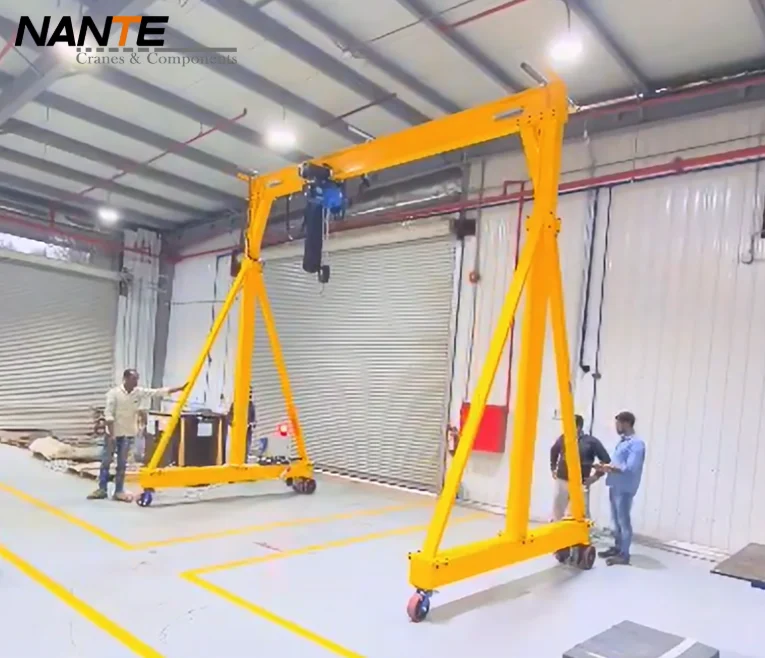
Rubber Tired Gantry (RTG) cranes use rubber tires to improve their maneuverability by allowing them to move in lines or diagonally and rotate as needed in tight spaces. They can work alone or together to increase productivity. This design is ideal for industrial settings where precise movement is essential and helps improve the overall efficiency of operations significantly.
Mobile Gantry Systems: Trackless Flexibility
Gantry systems for use are equipped with wheels or casters for moving without tracks efficiently and economically when overhead systems are not feasible, in various industrial settings.
Hybrid Electric-Diesel Power Configurations
Cranes at the gantry can be powered by motors or diesel engines. Electric systems are preferred for use due to their eco-friendly operation and cost efficiency in the long run. Diesel engines are more suitable for remote areas but come with higher expenses, for fuel and maintenance. The selection of a power source depends significantly upon the needs of the application.
Custom-Built Solutions for Specialized Operations
Tailored overhead crane options are accessible to fulfill project requirements effectively and efficiently. Customers have the flexibility to adjust elements like hoists and operating mechanisms without facing extra expenses. These personalized setups guarantee top-notch functionality in operational settings, enabling businesses to tackle particular obstacles with ease and achieve favorable outcomes.
Procurement Decision Framework
Load Capacity Calculation Methodology (ISO 4301)
Ensuring the calculation of load capacity is crucial in choosing a gantry crane model. Carefully following ISO 4301 guidelines helps ensure computations and adhering to standards like FEM, CMAA, ISO EN, and GB is vital for ensuring the quality of design and production. Adopting this method effectively safeguards the safe operation of the crane.
Span Optimization: 20m-50m Range Selection Criteria
Choosing the right span size is essential for maximizing efficiency in crane usage settings. Gantry cranes come in span sizes that range from 5 to 40 meters, commonly opted for spans falling within the 20 to50-meterr range as it offers a blend of reach and stability indeed.
Site-Specific Factors: Ground Bearing Pressure & Turning Radius
Factors specific to the site play a role in selecting the right crane for the job; things like ground pressure capacity and turning capabilities are key considerations here! The incorporation of wheels with brake bearings and rubber tires allows cranes to maneuver smoothly over rough terrain without causing damage or safety concerns at the work site.
Energy Systems: Tier 4 Diesel vs Electric Drive Comparison
When making purchasing decisions for energy systems it’s important to compare options. Electric motors are known for their cost efficiency and positive impact on the environment, whereas Tier 4 diesel engines are preferred for their performance in isolated areas. This assessment assists in finding the balance between sustainability, efficiency, and cost-effectiveness based on the specific use case.
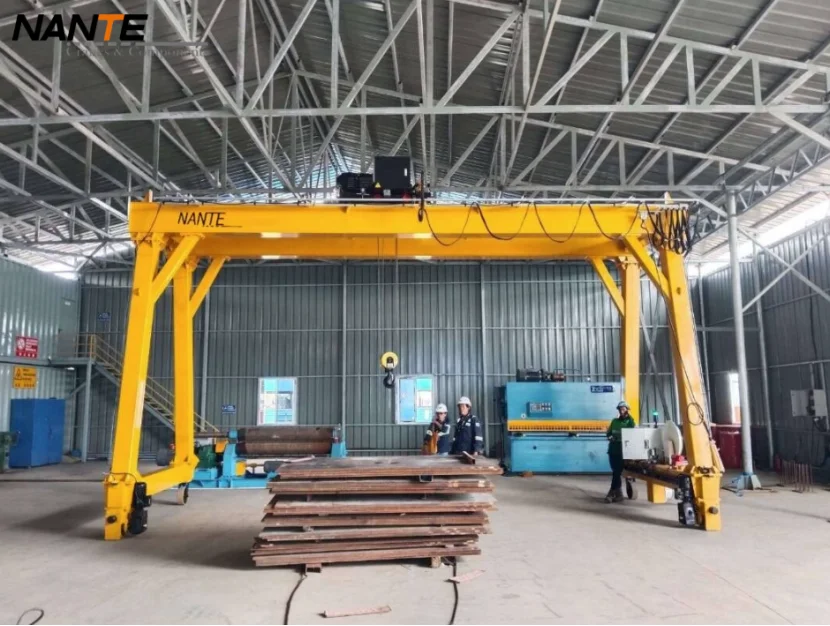
Control System Evolution: Radio vs Fiber-Optic Protocols
Control systems have come away from basic radio protocols to sophisticated fiber optic networks in modern times. Today’s cranes are equipped with control options including remote control features in the cab and pendent controls that enhance communication and precision. This advancement in control technology plays a role in enhancing operational safety and responsiveness, within intricate industrial settings worldwide.
Safety Engineering Systems
Load Moment Limiting Devices (EN 14492)
Safety mechanisms known as load moment limiting devices in compliance with EN 14492 are utilized to prevent cranes from exceeding operational boundaries. These devices autonomously regulate load movements to safeguard the integrity, against excessive strain and potential malfunctions.
Multi-Layer Safety Interlocks Architecture
Multi-tier safety interlock systems include overload safeguards, emergency brake mechanisms, limit switches, and collision prevention features. These interlocks work in unison to avert mishaps and uphold the operation of cranes within predefined safety boundaries.
Dynamic Collision Avoidance Systems (LiDAR-based)
Collision avoidance systems that are dynamic and frequently rely on LiDar technology constantly scan the surroundings to identify any obstacles there in a real-time fashion to avert accidents and ensure safety, for both individuals and machinery during crane activities.
Fail-Safe Braking: Disc vs Drum System Analysis
Safe braking systems that utilize disc or drum designs play a crucial role in providing necessary stopping power for cranes in emergencies and are commonly bolstered by electromagnetic braking technology to enable swift halting and avoid potential accidents.
Emergency Power-Off (EPO) Circuit Design
Crane control systems come equipped with emergency ppower-offcircuits that enable shutdown in case of critical failures to enhance safety and safeguard both the equipment and personnel in dangerous scenarios.
Global Market Analysis
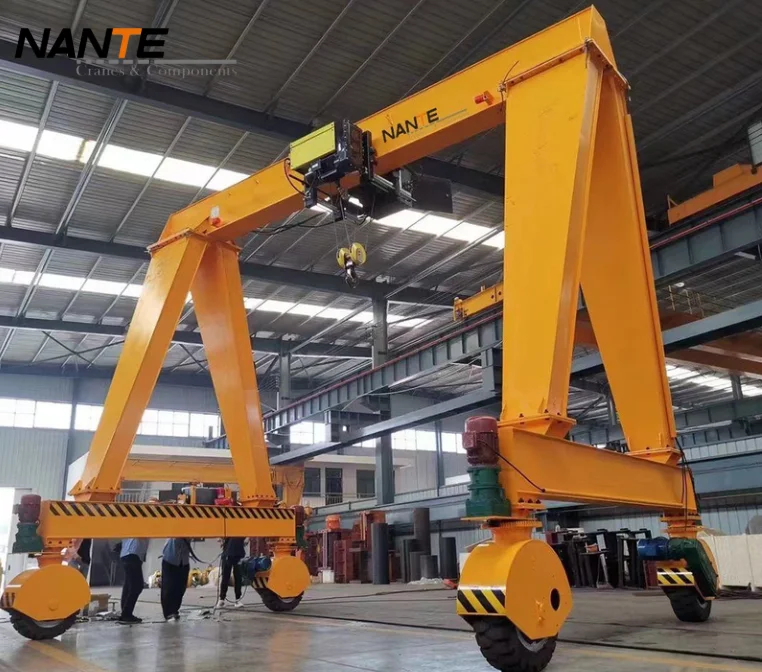
2024 Market Share: Konecranes vs ZPMC
In the year 2024, the worldwide market for gantry cranes is highly competitive with major players such as Konecranes and ZPMC holding market shares. Their ongoing innovation and strategic growth have established benchmarks in performance, dependability, and technological progress, shaping market trends. These industry pacesetters are instrumental in propelling expansion and sparking shifts across the global sector.
Regional Supply Chain Dynamics
Regional supply chains have an impact on the gantry crane market dynamics and operations worldwide; North America thrives on robust manufacturing and construction industries, whereas China leads in production capacity within the sector as key players in the global market arena are attentive to pricing variations and delivery schedules that shape competition and market strategies across various regions.
Aftermarket Service Network Evaluation
Key Manufacturers and Suppliers in the Tyre Gantry Crane Market
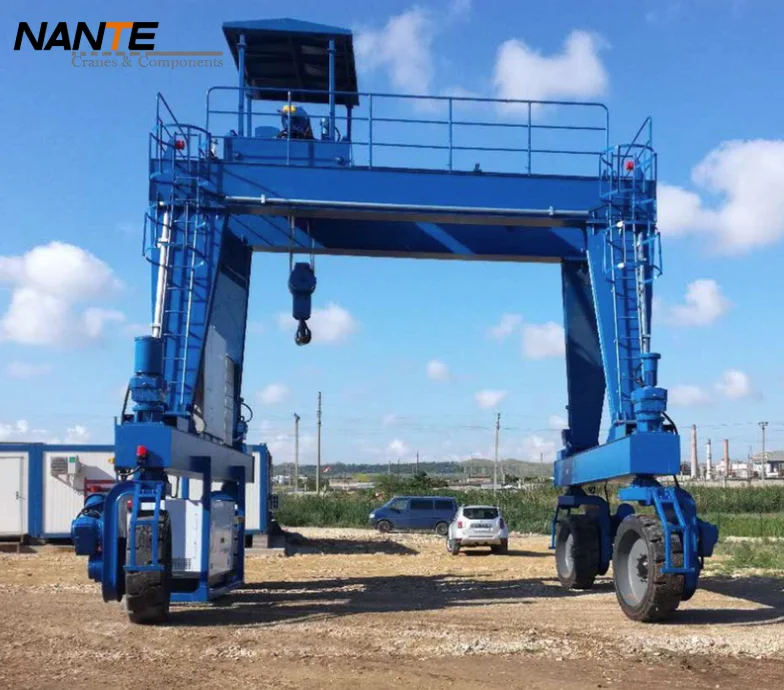
Top Global Players
The international market for gantry cranes is fiercely competitive. Dominated by top companies that establish industry norms. Leading players like Aicrane, Doosan, JASO, Konecranes, Liebherr, Mammoet, Mi-Jack, SANY GROUP, and China NANTE are known for their groundbreaking ideas, dependability, and exceptional engineering skills. These firms allocate substantial resources toward research and development to guarantee that their offerings adhere to strict safety and operational criteria. They offer a range of products that serve different industries such as ports and manufacturing plants and play a significant role in driving global market expansion and technological progress in the crane sector. Their dedication to maintaining high standards fuels ongoing enhancements and ensures customer happiness on a global scale.
Nante Crane and its Tyre Gantry Crane Solutions
Nante Crane is well known for providing a variety of tyre gantry crane solutions that include girder cranes as well as double girder and truss gantry cranes in their product range. They follow design standards like FEM, CMAA, ISO, EN, BS, and GB to guarantee top-quality performance across their product lineup. Their crane models come in capacities ranging from 20 tons for single girder cranes to 63 tons for standard ones and up to 100 tons for advanced models that feature winches. Nante is well known for its functioning and adaptable steering with smart control systems that offer dependable and secure solutions customized to meet a variety of industrial needs while driving cutting-edge innovation around the world.
Conclusion: Investing Wisely in a Tyre Gantry Crane
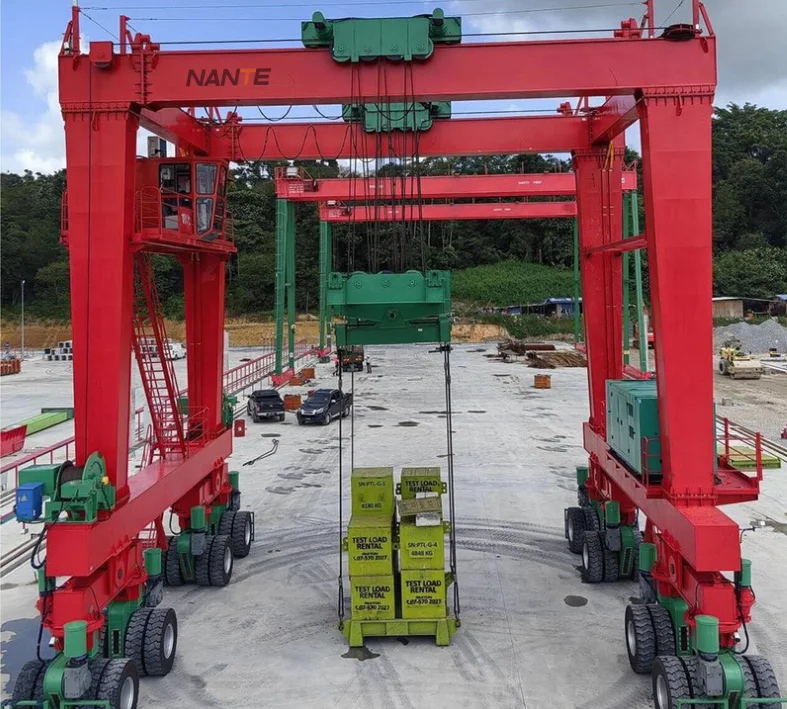
When considering a tyre gantry crane investment, it’s essential to assess the lifting capacity, span length, duty cycle, mobility, power source, and safety features thoroughly. A decision made with knowledge can boost operational efficiency and contribute to the success of the business in the long run. Make a prudent choice to ensure top-notch performance and value. Wise investments now lay the foundation for a promising future, no doubt.
Frequently Asked Questions About Rubber-Tired Gantry Crane Factories in China
What are the primary applications of Rubber Tired Gantry Cranes (RTGs) in China?
Rubber-tired gantry Cranes play a role in container terminals and ports for organizing and moving containers efficiently. They can be found not only in these settings but also in diverse industries, like logistics hubs and construction sites.
What are the key benefits of using RTGs over other types of cranes?
RTGs come with benefits such as great mobility thanks to their rubber tires that eliminate the requirement for fixed rails or tracks. They are eco-friendly as they are frequently powered by electricity and help infrastructure expenses. Furthermore, RGTs enable the operation and can handle a variety of container sizes while improving operator comfort and safety.
How do RTG cranes ensure safety and efficiency in operations?
RTGs come with high-tech safety features like overload protection devices and anti-collision systems in addition to container positioning systems, for operations. Moreover, the cranes use PLC frequency adjustment and a CMMS (fault monitor system), ensuring effective functioning. The cabins are designed ergonomically with visibility and advanced control systems to boost safety measures and productivity even more.
What types of power options are available for RTG cranes in China?
RTGs in China come with power choices like hybrid engines and electric motors aside from diesel engines too! The electric ones are quite a hit because they help cut down emissions and noise pollution – a win for the environment! You can pick the power source that fits your requirements best.
Can RTG cranes be customized to meet specific industrial requirements?
Yes, many Chinese manufacturers offer customized solutions for RTG cranes. You can find cranes with capacities ranging from 5 to 500 tons, and they come in different types such as single-beam, double-beam, and A-frame types. Manufacturers like Nante provide tailored designs to fit your specific industrial needs, ensuring you get the right equipment for your operations.
 English
English






